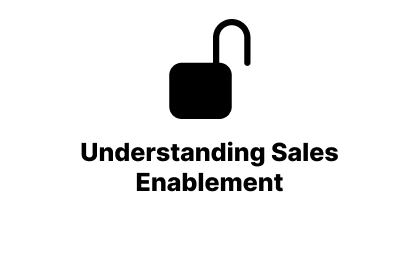Understanding Sales Enablement: An Indispensable Strategy for Success
In the competitive world of business, a company's sales team is often its lifeline, converting prospects into customers and driving revenue growth.
To keep the pulse strong and steady, organizations are increasingly focusing on sales enablement, a strategic approach that empowers sales teams to sell more efficiently and effectively. Let's dive into what sales enablement entails, why it's crucial for businesses today, and how to implement it successfully.
Defining Sales Enablement
Sales enablement is a strategic, cross-functional discipline designed to increase sales results and productivity by providing integrated content, training, and coaching services for salespeople and front-line sales managers along the entire customer’s buying journey, powered by technology. The term may seem broad, and that's because it is. Sales enablement encompasses a range of activities and disciplines that, together, aim to improve the performance of salespeople.
The end goal of sales enablement is to ensure that salespeople have the necessary resources, tools, skills, and knowledge to effectively engage with customers and prospects. These resources can include content, tools, knowledge, and information to effectively sell your product or service.
The Importance of Sales Enablement
In the digital age, customers have access to an overwhelming amount of information and choice. They are more informed and have higher expectations than ever before. To meet and exceed these expectations, salespeople need to be well-equipped and highly skilled. This is where sales enablement comes in. Here are a few reasons why sales enablement is critical:
1. Increased Sales Productivity
Sales enablement helps salespeople spend their time more effectively. With the right resources at their disposal, salespeople can better understand the customer's needs and provide them with the most relevant solutions. This leads to increased productivity, as salespeople can focus more on selling and less on searching for information or creating content.
2. Enhanced Sales and Marketing Alignment
Sales enablement fosters better alignment between the sales and marketing departments. Both teams need to work together to create and use sales content effectively. This collaboration leads to more consistent messaging, better quality leads, and ultimately, more sales.
3. Improved Sales Training and Onboarding
A key component of sales enablement is training and coaching. This involves not only product training but also training in sales techniques, negotiation skills, and customer relationship management. Effective training and coaching programs ensure that all salespeople have the skills they need to succeed, reducing the time it takes new hires to become productive members of the team.
Implementing Sales Enablement
Now that we've covered what sales enablement is and why it's important, let's discuss how to implement it effectively:
1. Establish a Sales Enablement Charter
The first step in implementing sales enablement is to define its purpose, goals, and strategy. This should be documented in a sales enablement charter, which serves as a roadmap for your sales enablement initiatives.
2. Align with Marketing
Sales and marketing alignment is crucial for sales enablement. These teams should work together to create and distribute effective sales content. Regular meetings and communication between the two teams can help maintain alignment.
3. Provide the Right Tools and Resources
Salespeople need the right tools and resources to do their jobs effectively. This might include CRM software, content management systems, communication tools, and more. It's also important to ensure that salespeople know how to use these tools effectively.
4. Implement Regular Training and Coaching
Regular training and coaching should be a cornerstone of your sales enablement strategy. This should be an ongoing process that includes onboarding training for new hires and continuous training for existing salespeople.
5. Measure Success
Lastly, it's crucial
to measure the success of your sales enablement initiatives. This can involve tracking metrics like sales cycle length, deal size, and revenue. By monitoring these metrics, you can identify what's working and what's not, and make adjustments as necessary.
Wrapping Up
Sales enablement is not just a buzzword—it's a strategic approach that can significantly improve the performance of your sales team. By providing salespeople with the right resources, fostering alignment between sales and marketing, and implementing effective training and coaching programs, you can empower your sales team to sell more effectively and drive business growth. Implementing sales enablement might seem like a daunting task, but the benefits it brings can be well worth the effort.



